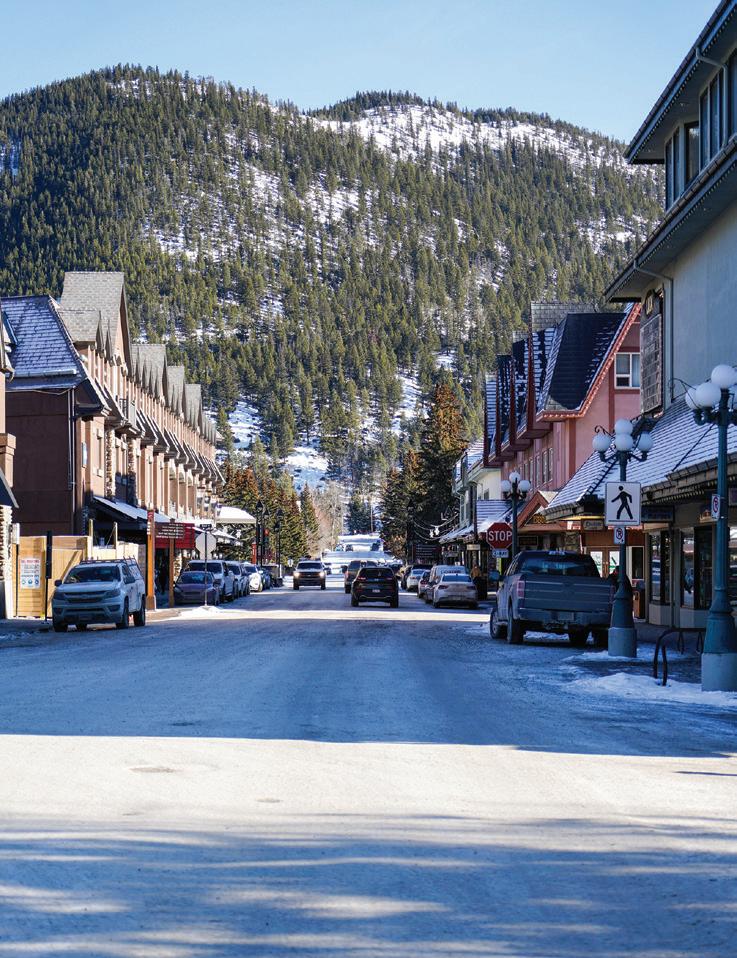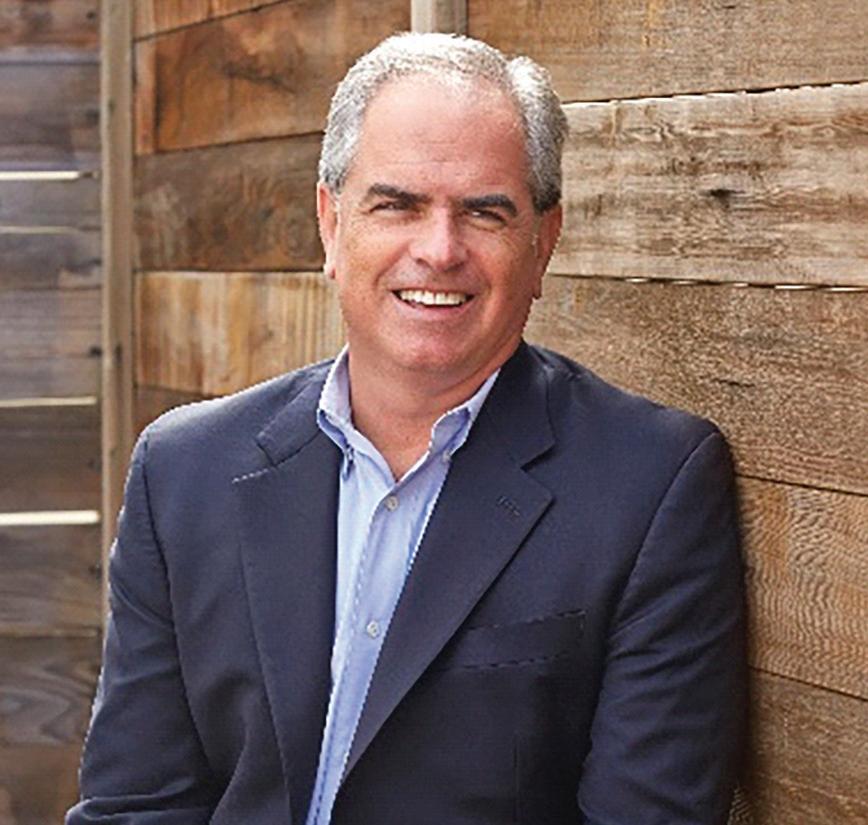
8 minute read
Todd Wynne-Parry’s guide to selecting the perfect site
GLAMPING SITE SELECTION
BY TODD WYNNE-PARRY
There is an old adage in real estate that states simply the key to success is “location, location, location.” This remains true in the glamping world, but with the added nuance of “site, site, site” rounding out the key to success. In this article, I will explore the key attributes of both the location (the geographical area or destination) and the site (the actual real property within the location) that form selection criteria for a successful glamping operation. The guiding questions for this exercise will be why, where and what now?
What is your “why?” for your glamping operation? I assume all potential glamping operations have a visionary developer or a group of leaders with a common vision. This vision ultimately is designed to provide guests with a specific outdoor experience. It may also provide stakeholders with a specific return on investment which may be just economic or may also provide a return on a more altruistic level (low impact on the environment, providing transformative experiences, enhancing the local or global community, etc.) which fortunately tends to be part and parcel of the glamping movement. Regardless, we start with the “why?” because at the end of the day the site must be able to accomplish the vision. That is, the site needs to match the key tenants of the vision. For instance, if a deep communion with the outdoors is a key part of the vision, it will be difficult to achieve on a site where the growl of a semi tractor-trailer applying its Jake brake on the nearby interstate cancels the soothing sounds of nature. Therefore, understanding the vision is the first step in the site selection.
The vision of the glamping operation needs to answer a number of key questions around the guest experience. The guest experience will be affected by questions such as:

• What is their sense of arrival? • What was their pre-arrival experience? • How did they book? Did they have to pre-book activities? • How did they get there? Drive? Fly? Hike in?
How long did that take? • What feeling is evoked from the moment they turn into the property and approach the reception? • How are they greeted? By a person or do they self-check-in? • How to they transition from check-in to their accommodation? Is it far? Hilly? Is there assistance? • What is the experience while on the property? • Is it very communal with one fire pit for all guests, several fire pits for site clusters or individual fire pits at each tent? • Where do they eat? On property entirely
(all-inclusive) or breakfast only? Or in a nearby village? • How do they reserve guided experiences and are those experiences outsourced or run in-house? • Are there facilities on property that guests can easily access for self-guided experiences such as hiking and biking trails, corn hole or bocci courts, swimming, fishing, etc.? • What’s the vision’s relationship with technology? Is Wi-Fi and/or mobile phone service non-existent or in rooms or in public space only? • What in summary will each guests’ experience be when they depart? What will they tell their friends about? What did the site provide that allowed the guest to have a memorable experience?
With these questions answered and front of mind we can now turn to the “where?”. If the plan is for just one property and not to scale over time, I suggest your “where?” should begin somewhere near where you live. Should the plan be to roll out a nation-wide product, perhaps begin regionally (within a five-hour drive) and expand to other regions as funds and your platform can handle. Next, does the vision work in all four seasons or only two or three? This is a major consideration not just for the “where?” but also for the economics (only six to nine months of income) and operations (annual lay-off/re-hire process and breakdowns/storage/set-ups, etc.). Having these two major considerations determined will provide further guidance on the optimal site.
Just a quick check-in – please remember that glamping is a hospitality operation. Therefore, you will always have the hospitality stakeholder trinity to satisfy. The hospitality trinity is:
• Guests (they buy the experience you are selling), • Employees (they deliver the guest experience he guests are buying), and • Investors (they will need profit at some point).
This is important because looking at the key site selection criteria for a glamping operation needs to keep these stakeholders in mind. The guest needs to get to the site, there needs to be an employee pool to draw from and the cost of the site along with the development cost needs to be in line with the investment objectives.
The key glamping location selection criteria presented below are based on a very general glamping concept currently in vogue in the USA. Some may not be relevant depending on the vision or in another country. However, for a drive-to mainland USA glamping operation there are really four major considerations, they are:
1. Drive Time - The location should be a two- to four-hour drive from a major population source (say the top 25 MSA’s). The concept here is that a couple or a family could get to the site in a morning or afternoon drive from home. This distance also allows for small corporate group or association off-site meetings or retreats to be easily accessed mid-week. 2. Demand Generator Adjacent – The location should be located within a 30–45-minute drive from any major demand generator such as a national park, mountain, forest, lake, river, ocean, historic attraction or wine country. The property needs to be reasonably close to the visitation driver of that destination.
3. Support Services Adjacent – Having a close proximity of a 10–15-minute drive, hike or bicycle ride to a small village with shops, restaurants, pharmacy, grocery store is a key amenity particularly if your vision does not provide for a three-meal F&B option.
If the vision is all-inclusive then this selection requirement remains important for having a pool of local residents to draw upon for staffing. There are of course exceptions to this, particularly at the very high end of the glamping experience. 4. The X Factor - This is a little harder to describe and cannot be quantified like the above. It can be somewhat subjective but equally important. That is, your proposed

location may satisfy the above three criteria, but remains a bit hard to market to a discerning clientele willing to pay more than $200/night for a glamping experience. A clear indicator of the X factor is if there are existing resorts or lodges in the area that are successful at generating similar or higher room rates than planned. If not, then there is probably a reason and that needs to be considered.
Drilling now a bit deeper into the specific site, there is yet but another list of critical questions that should be considered. We are assuming here that the proposed site, its size and contours allow it to deliver the guest experience and can accommodate the type of lodging and support facilities the vision requires. These questions deal more with the timing and viability of the operation. The overarching question here is – does the site have a clear pathway to development and opening? These pre-due diligence considerations include:

- Will the local or regional government or regulatory bodies be supportive of your vision? - Does the site’s current entitlements or zoning status allow for developing the vision as of right now or will you need to apply for changes in addition to building permits? - What are the obstacles for developing basic infrastructure items such as utilities, roads, fire and life safety requirements? - Is the price in line with the current local market? Is it at or below what the pro forma can afford?
These questions provide a basic checklist for a successful glamping operation site. However, these might be altered in several ways depending on your unique vision. Asking the tough questions around the suitability of the site for the guest experience, being able to draw on a pool of local staff for the operation and of course the viability of the site to be funded and developed will remain essential regardless of the vision’s unique characteristics.
So, what now? You have selected a perfect site in a proven location, now what? This is where the difficult part starts. In my next article, I will highlight the key attributes of a successful glamping operation: specifically, the relationship between the vision, its built form and ultimately its financial viability.
About Todd G. Wynne-Parry
The founder and CEO of Montare Hospitality Advisors (an M&A and advisory group dedicated to the Glamping and boutique lodging sectors), Todd has more than 30 years of hotel development and acquisitions experience, having held senior leadership positions at several major hotel brands and most recently as Chief Growth Officer at AutoCamp. A dual-citizen of Australia and the United States, Wynne-Parry has lived and worked in the U.S., Asia, Australia and the United Kingdom. He was instrumental in the development efforts for IHG, Starwood and Marriott in the Asia Pacific region and for Commune and Two Roads Hospitality globally. Todd earned an MBA from Thunderbird Graduate School of International Management and his BA from Alma College. He is the treasurer of the Board of Directors of the U.S. Development Trust for Scotland’s University of Aberdeen and is an advisor to the American Glamping Association. As a devout outdoorsman and fly fisherman, he resides on the Deschutes River in Bend, Oregon, but prefers the open road towing his vintage Airstream Flying Cloud.










